A familiar garden bird to many, the Eurasian collared dove (usually just referred to as the collared dove in the UK) actually only started breeding in the UK in recent decades. It is smaller than the large woodpigeon, and larger than the closely related European turtle dove.
As the common name suggests, they are widely found across much of Europe and Asia, including Turkey, southern China, India, Sri Lanka and now across Germany, France, Spain and the UK.
What is the scientific name of the collared dove?
The scientific name of the collared dove is Streptopelia decaocto.
‘Streptopelia’ is derived from two Ancient Greek words, ‘streptos’ meaning ‘collar’ and ‘peleia’ meaning ‘dove’. Whilst the specific name ‘decaocto’ comes from a myth and its call. The myth describes how a maid complained about her very low wage of ‘decaocto’ (eighteen) pieces. The dove was created by the god Zeus to shame her mistress.
The collared dove belongs to the same genus as turtle doves and other collared dove species.
How to identify a collared dove
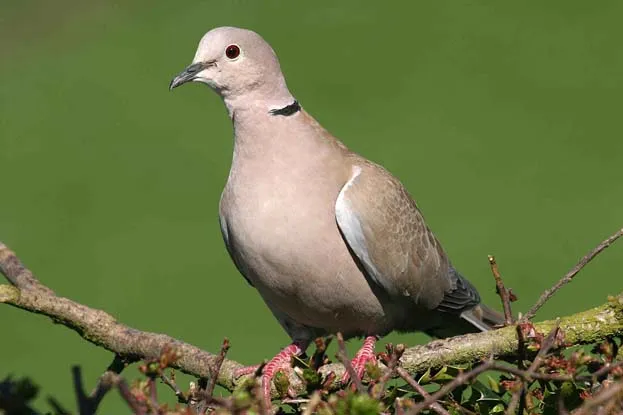
Collared doves are smaller and more delicate-looking than woodpigeons, with creamy grey-buff plumage. Adults have a black half-collar on the back of their necks.
Their typical call is a clear and persistent three note ‘coo coo cuk’.
Please note that external videos may contain ads:
Bird Song Basics - Collared Dove and Woodpigeon © BTO
BTO Bird ID - Collared Dove & Turtle Dove © BTO
Were collared doves introduced to the UK?
Collared doves have only lived and bred in the UK for a few decades, but they weren't introduced - they spread to new areas on their own, as their young have a tendency to disperse far and wide.
Eurasian collared doves are an invasive, non-native species in North America, where they're now widespread since a few dozen collared doves escaped from an enclosure in Bahamas in 1974. Their range expansion through the US was even faster than their spread across Europe.
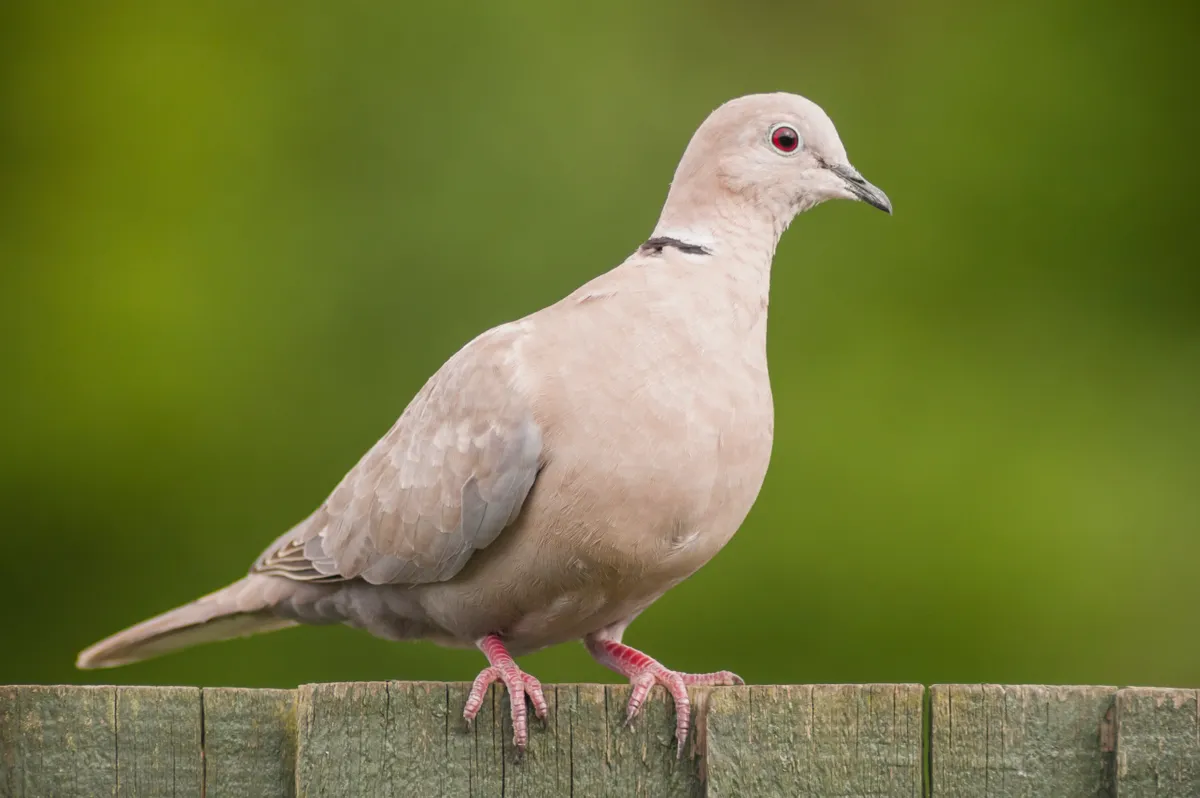
Where did collared doves come from?
They might be familiar birds in our towns and cities, but collared doves were unknown in the UK before the 1950s – the early vagrants that showed up in Norfolk drew crowds of twitchers.
The spread of the Eurasian collared dove, often described as one of the great avian colonisers, is an ornithological wonder. This pigeon isn’t migratory but strongly dispersive, having spread from its natal range in subtropical Asia west to Turkey.
It seemed to have a built-in predisposition to head west. In 1838, it was first reported in Bulgaria, by the early 1900s, the Balkans, Germany by 1945 and Great Britain by 1953, where the first breeding occurred in 1956. Three years later the doves were in Ireland and then the northerly climes of the Faroe Islands by the early 1970s.
This Q&A originally appeared in BBC Wildlife, and was answered by David Lindo.
How far do collared doves fly?
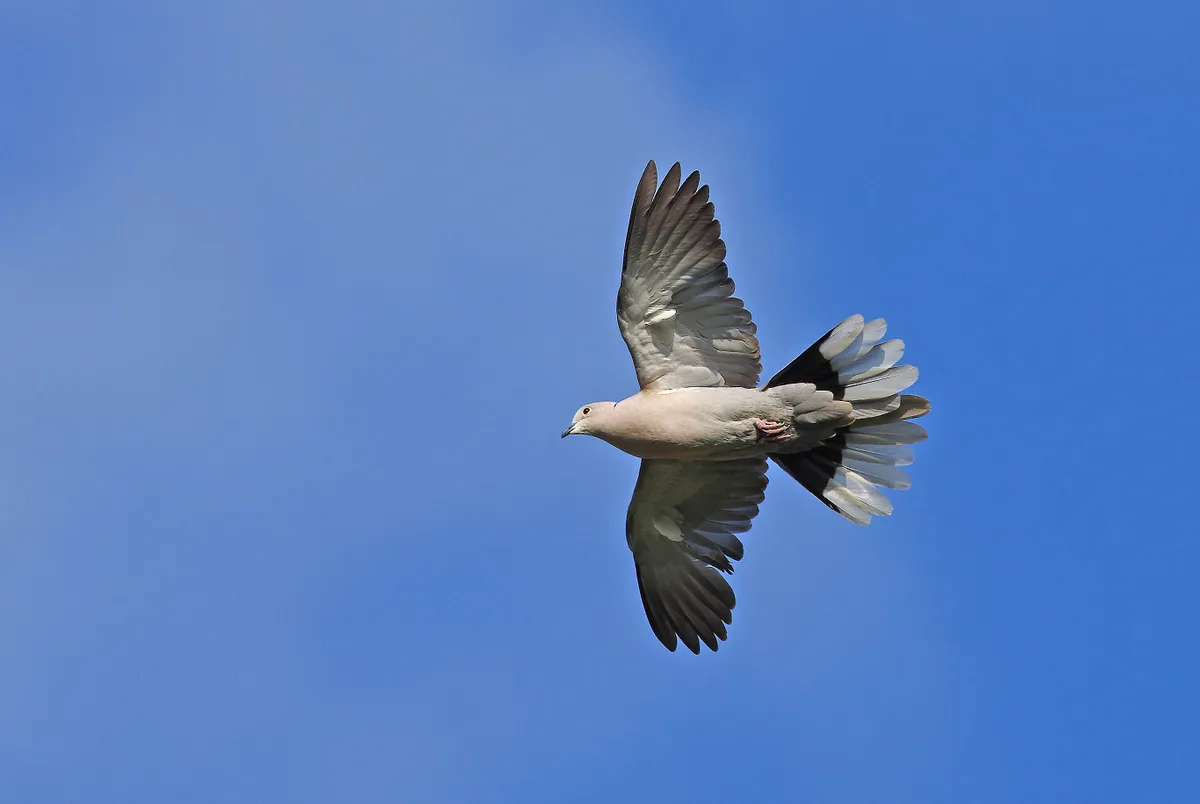
Young collared doves have been known to travel over 600km away from where they were born. These epic journeys, made all over Europe, tend to be in a northwest direction, reflecting the direction of the species' range expansion in the 20th century.
Do collared doves mate for life?
Collared doves are monogamous and can breed continuously in warm regions. When a pair has eggs in the nest, the female will incubate the eggs during the day before swapping over at dusk for the male to incubate through the night.
How many chicks do collared doves have?
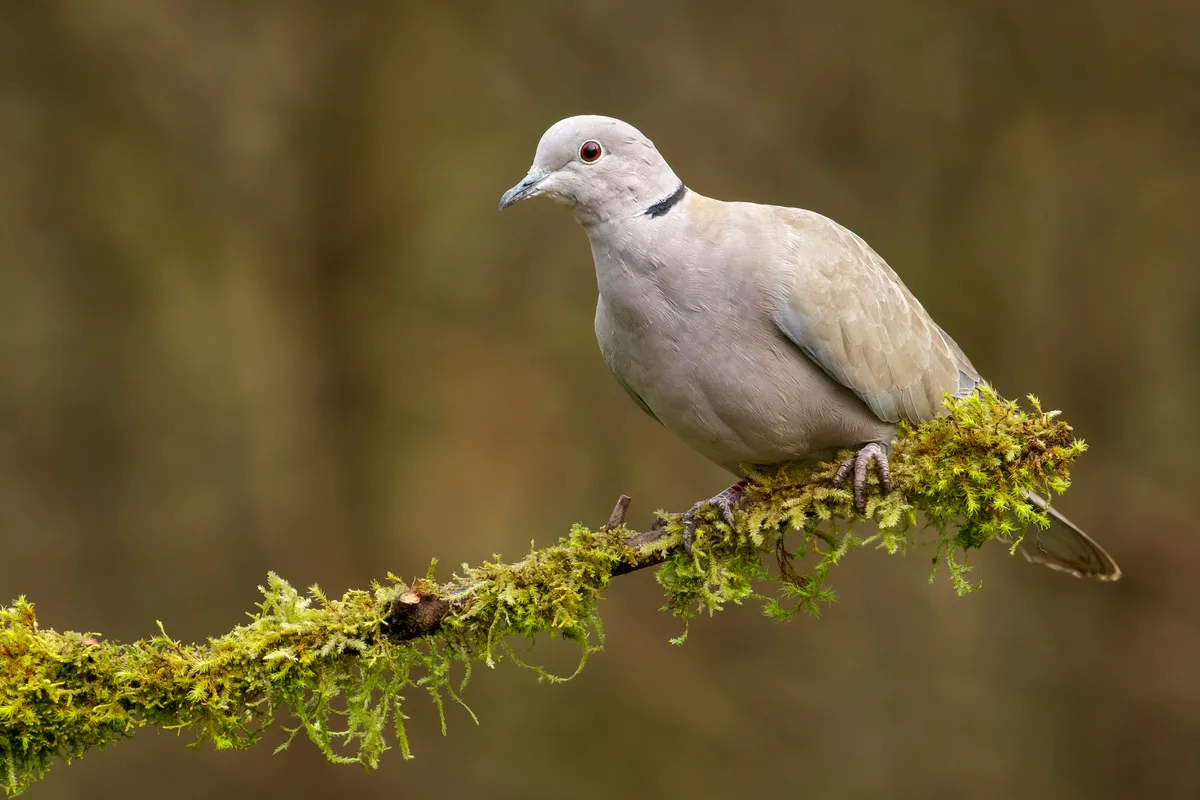
One factor behind the collared dove’s success is its ability to breed year-round if the weather is mild. They may also start a new nest before the previous young are independent, with the female using breaks from incubation to feed recently fledged offspring.
A female will lay two white eggs in her nest, and the female and male take turns incubating the eggs for between 14 to 18 days.
What do collared dove nests look like?
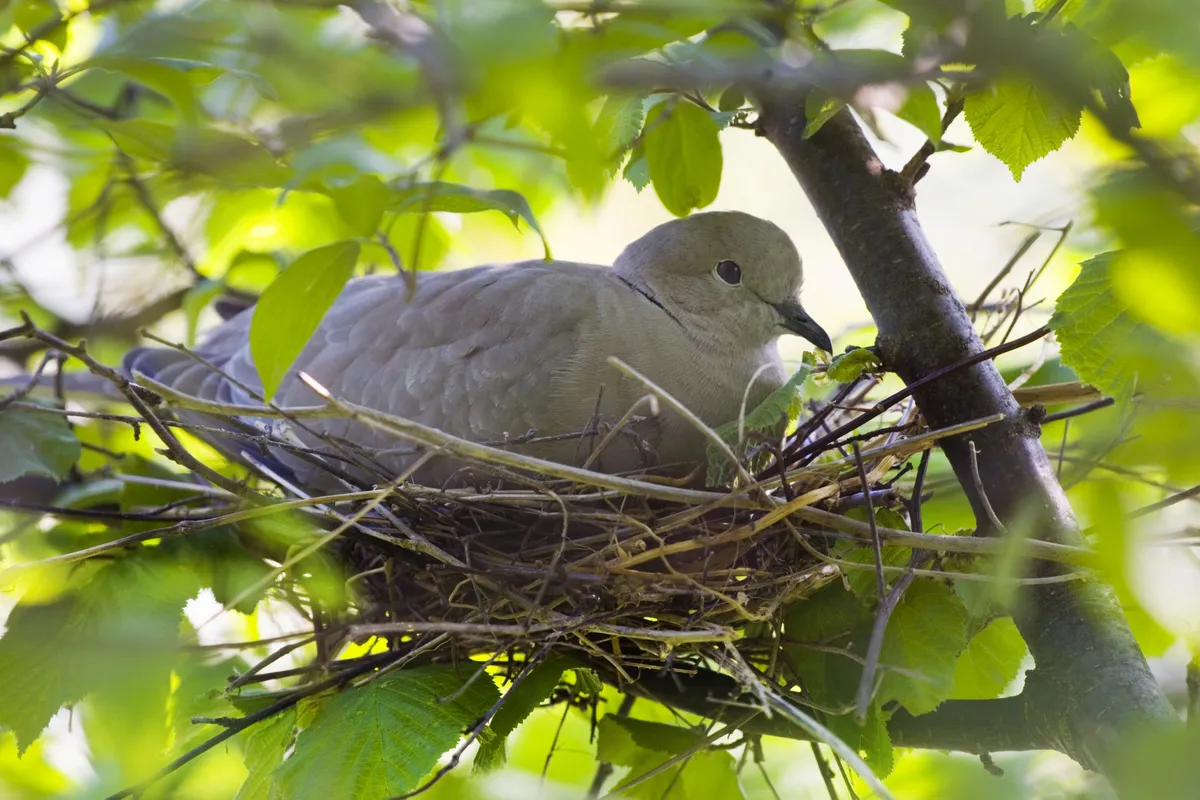
Collared dove nests usually just consist of a platform of sticks – no construction prizes here! They usually nest in trees or shrubs but will also use buildings, favouring ledges, guttering, and the brackets of security lights or satellite dishes.
How common are collared doves?
The British collared dove population started to decline in 2005, though it is still one of the top 10 most common birds seen in BTO Garden BirdWatch gardens. The decline could be due to increasing woodpigeon numbers as the two potentially compete for resources, though it is thought that the disease trichomonosis may also be a cause.
How long do collared doves live for?

The average collared dove lifespan is around three years, although the record is an impressive 17 years. Collared doves reach sexual maturity at one year old.
Do collared doves ever fly into windows?
If you’ve ever seen a detailed print where a bird has flown into a window, it’s probably a collared dove. Their feathers are so dusty that, on a window imprint, you can often see the detail of individual feathers, the beak and even the eyelids.
